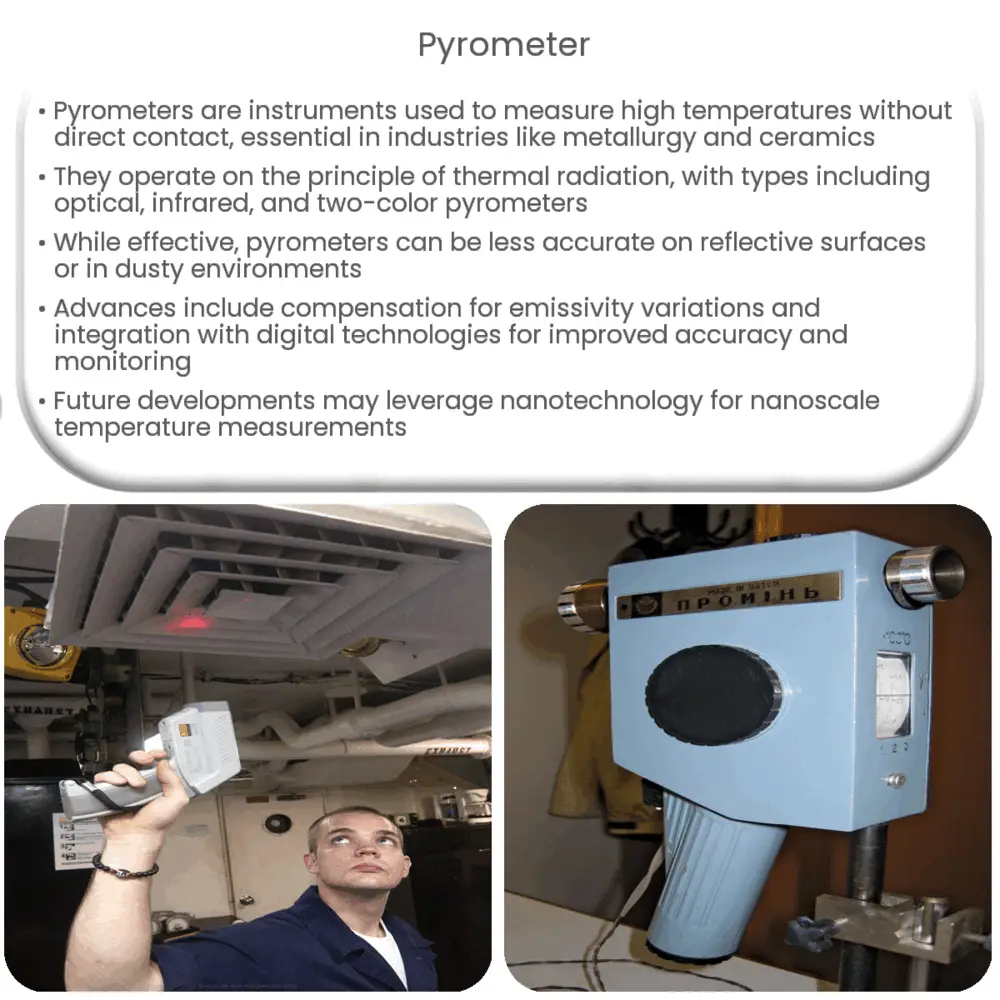Explore the workings, types, applications, and future of pyrometers, instruments crucial for measuring high temperatures safely.

Introduction to Pyrometers
A pyrometer is an instrument used to measure high temperatures, typically in situations where direct contact with the heated object is not feasible or safe. It is a crucial tool in many industries, such as metallurgy, ceramics, and glass manufacturing, where monitoring temperature is vital for product quality and safety.
The Working Principle of Pyrometers
Pyrometers operate on the principle of thermal radiation. Every object above absolute zero temperature emits thermal radiation, and the intensity of this radiation correlates with the temperature of the object. By detecting and measuring this thermal radiation, pyrometers can estimate the temperature of the object.
Types of Pyrometers
Applications of Pyrometers
Pyrometers are widely used in industries where temperature control is critical. Some of the key applications are:
Despite their wide range of applications, pyrometers do have limitations. They are less effective on shiny or polished surfaces, as these can reflect ambient radiation, causing inaccurate readings. Moreover, the readings can be affected by dust, smoke, or other particles that interfere with the path of the thermal radiation.
Improvements and Advances in Pyrometry
Over the years, numerous improvements have been made to pyrometers to overcome their limitations and expand their applications. Modern pyrometers often include features to compensate for variations in emissivity, a property that affects how much thermal radiation an object emits. Some devices also incorporate filters or other technologies to reduce the impact of interfering substances like dust and smoke.
Pyrometers in the Digital Age
In the digital age, pyrometers have been integrated with advanced technologies to further enhance their capabilities. Many devices now include digital displays for easy reading, data logging capabilities for tracking temperature changes over time, and connectivity features to enable remote monitoring and control. Additionally, advanced software algorithms are used to improve accuracy and reliability.
The Future of Pyrometry
As we move forward, it is expected that pyrometers will continue to evolve. Developments in fields such as nanotechnology, photonics, and materials science may lead to new types of pyrometers with enhanced capabilities. For example, researchers are exploring the use of nanomaterials to create pyrometers that can measure temperatures at the nanoscale, opening up new possibilities in areas like materials research and biological studies.
Conclusion
In conclusion, pyrometers are essential tools in many industries for their ability to measure high temperatures from a safe distance. While they have certain limitations, ongoing advancements in technology continue to improve their accuracy and versatility. As we continue to push the boundaries of science and technology, pyrometers will undoubtedly continue to play a vital role in a wide array of applications, from industrial manufacturing to scientific research.

